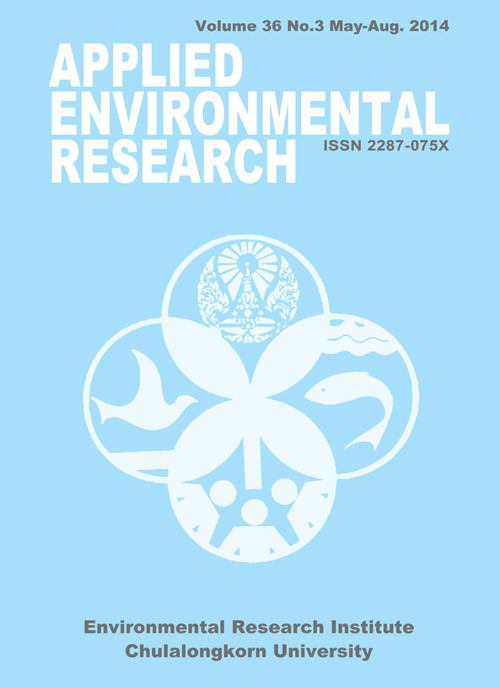Production of Charcoal Briquettes from Palmyra Palm Waste in Kirimat District, Sukhothai Province, Thailand
Main Article Content
Abstract
Palmyra palm is a significant economic crop in Kirimat District, Sukhothai Province, and generates large quantities of husks, stalks and shells as by-products and wastes, which impacts on the local environment. This study investigated (1) production of compressed charcoal briquettes from Palmyra palm husks, fruit calyx and shells, whose physical properties and thermal performance were tested and analyzed according to Thai Community Product Standard (tcps 238/2004); (2) the economic return of the production process. The results showed that 40 % of shells of a mature palm fruit and 90 % of the husk and fruit calyx of young palm fruit are left over. Moreover, the thermal properties of the palm husks, fruit calyx and shells were found to be similar to those of coconut shells and oil palms. In an experiment to test the properties of blends of the two products (husks and fruit calyx: shells) in 6 different mixing ratios using starch paste as binding agent, all 6 mixing ratios showed thermal values ranging from 5,281.60–6,702.00 kcal kg-1, which exceeded the Thai Community Product Standard (tcps). During combustion, these briquettes produced low levels of crackling, odour and smoke emissions, and drop shatter. These characteristics make the studied briquettes appropriate for storage and transport. At a production cost of 4.83 baht kg-1 for a production capacity of 400 kg d-1, the payback period was 1.3 years. Therefore, the palm briquettes would make an alternative source of additional income and an alternative fuel substitute for wood charcoal and LPG.
Article Details

This work is licensed under a Creative Commons Attribution-NonCommercial 4.0 International License.
Published articles are under the copyright of the Applied Environmental Research effective when the article is accepted for publication thus granting Applied Environmental Research all rights for the work so that both parties may be protected from the consequences of unauthorized use. Partially or totally publication of an article elsewhere is possible only after the consent from the editors.

